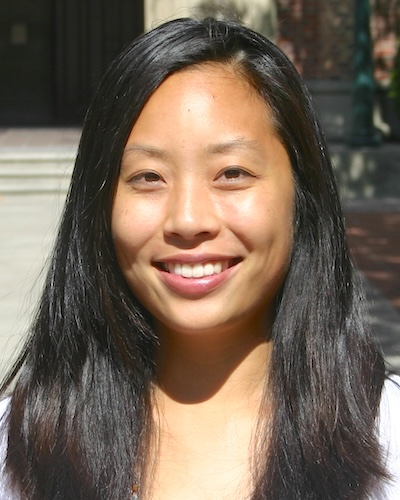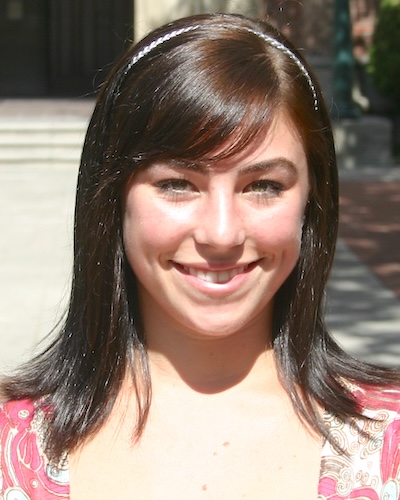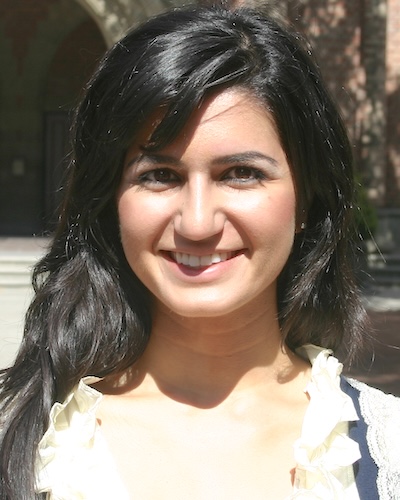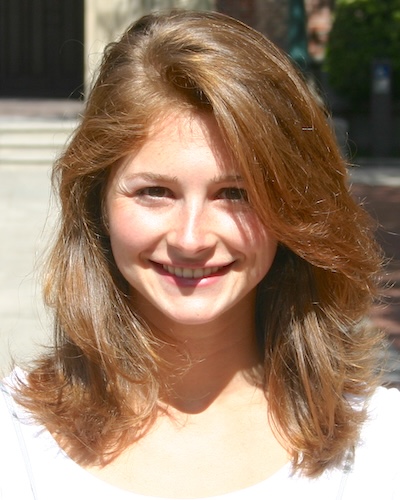Student Blog
What are OS/OT?

5 more months . . . ⟩
January 13, 2011, by Yao
Classes What are OS/OT?
My last Spring semester, I can’t believe it but I’m looking forward to my courses!
It’s the start of our last semester — I never thought that this time would actually come; I knew that it was coming but it was the ever-elusive last step until I enter the real world. Well it’s here. And oddly enough it promises to be one of my most diverse semesters and for once my choice of electives outweigh the number of core classes that I’ll be taking.
The first of my electives is “Sensory Integration,” which was introduced to me while volunteering at a local occupational therapy clinic whose main treatment revolved around sensory integration. After seeing how it positively affected the children were engaging in treatment at the clinic sparked my interest. Ever since my first pediatrics class I’ve been fascinated by the fact that your senses can be used as processors and organizers of information from the environment. As a result some people may have issues using their senses to organize their environment and as a result may react negatively to their environment. This is going to be a very interesting and intense course in addition to being a typical class it also counts as one of four parts of a SIPT al certification in sensory integration through USC and WPS for practitioners. One of the things that I’m most excited about regarding this course aside from the material is that both of our teachers actually studied with and knew A. Jean. Ayres (the woman who developed the sensory integration as it is used in occupational therapy, here at USC)!
My second elective is motivational interviewing. Motivational interviewing can be a way of gathering information from potential clients as well as a relationship-building tool. I decided to take this class because not only would it provide another type of training that would best benefit potential patients but also can be used in furthering my OT skill project that a classmate and I will be presenting on in April in Philadelphia. Especially in this day and age it is very important to gather as much information about the person and their lives throughout the process of rehabilitation to ensure the success and relevancy of treatment.
And the third and last elective that I will be taking is a course that is offered at Keck Hospital of USC. It’s another opportunity to gain hands on clinical experience with the hospital population, which is one that I’m highly interested in. And it’ll be the first elective and fieldwork that I’ll be able to wear scrubs! Believe it or not I haven’t worn a pair of scrubs as a part of fieldwork or as part of my elective courses.
It’s so sad that although this semester is going to be full of meaningful classes and plenty of group outings and projects, it will be the last semester that all my classmates and I will be together, in the same place, on similar schedules. Through my experience in graduate school I’ve began to learn the importance of enjoying the moment and not focusing too much on the future because you’ll lose sight of the present. Here’s to an amazingly awesome last Spring semester!
⋯

Endless Opportunities ⟩
January 11, 2011, by Austen
What are OS/OT?
The band was back together again in Portland, Oregon. Over winter break, I went back home to reunite with my parents and my sister who had just returned from a semester in Capetown. It was as if we were never separated, just picked up where we left off as we always do. It is funny how that happens. As usual, my sister and I immediately jumped into the kitchen and started baking. Over the holidays, we went on a baking rampage. Luckily we were not the only ones eating our delicious creations, we baked for rescue missions, parties, friends, neighbors, and of course, our household. But I can honestly say I baked something new at least three times a week, and I looked forward to it each and every time. Some of my favorites and most successful endeavors were homemade granola, healthy(er) oatmeal chocolate peanut butter chip cookies, chocolate pecan toffee bars, german chocolate cake, lemon cupcakes with blueberry jam filling and vanilla frosting, and pumpkin ginger cookies with maple icing. Hungry? The list of baked goods that came out of my oven goes on and on. I guess you could say I love baking.
People tell me I should go to culinary school, become a food critic, or open a bakery, or all three. This all started when I returned from my semester abroad in Madrid with a new deep love of good food. I enjoy everything about it: reading recipes, grocery shopping, Food Network shows, cooking, indulging, and sharing the experience with others. Cooking and baking are now a large part of my life, and something I hope to continue doing. Since I find cooking and baking so enjoyable and meaningful, I would love to somehow incorporate it with my occupational therapy degree. Cooking classes for physically or mentally disabled? Baking as a social activity for developmentally delayed? Cooking classes for the college student? I often wonder if this is possible, but the more and more I talk about it with others, I realize that occupational therapy can be applied to and paired with any area of interest. Occupational therapy’s diverse and broad skill base can even serve as a valuable marketing tool to create a job that may lie outside the traditional medical/clinician role, whether that be related to cooking, nutrition, sports, music, dance, art, and so on. I once thought of occupational therapy as a very specific field, but I find now that occupational therapy can intertwine with many different aspects of life in ways we may not have explored before. On that note, I get more and more excited about all the opportunities awaiting me. So if you have any recommendations or ideas on how I can combine my love of food, cooking, and baking with occupational therapy, I am all ears!
Well, classes have begun and the semester is quickly underway. Here is to the New Year and my last semester. I think it will be a good one, a challenging one, and an exciting one. I look forward to it!
⋯

The Program is Flying By! ⟩
January 3, 2011, by Helen
Classes Getting Involved What are OS/OT?
It feels like just yesterday I was in the application process for the master’s program, anxious to learn Occupational Therapy and to one day become a therapist!
As 2010 just came to an end, I cannot believe that I only have six months left of the master’s program. In the last year and a half, it is amazing how much information we have covered. The first year flew by, providing us with a foundation of knowledge about pediatric OT, OT in the field of physical disabilities, geriatric OT, and OT in the fields of psychosocial/mental health. This second year, we have focused on learning how to build a therapeutic relationship with our clients, improving our listening skills, and understanding the theory behind our practice. By focusing on learning the history of where our profession has been, what the current state of our profession is, and where our profession is going, we are able to more creatively think about our own areas of interest. By better understanding what there is a need for in our profession, ideas of advocacy, research, and leadership are emphasized.
As a result of having learned so much about health care access, the history of our profession within the medical model, and the progression of current research, I have an increased interest in political advocacy and occupational therapy. Last year, I chose to get involved with an organization called CAHPSA (the California Health Professional Student Alliance). Currently, we are a week away from hosting Lobby Day in Sacramento. On January 9th and 10th, 200-500 health professional students will be traveling to Sacramento to meet with assembly members and senators to discuss how Health Care Reform will impact our personal professions.
One of my favorite aspects of our program has been the emphasis on understanding the theory behind our practice and the value for being aware of our professional past, present, and future. This value for the history of our profession is what has inspired me most to impact the future of occupational therapy practice.
⋯

Clinical Coursework ⟩
December 17, 2010, by Amanda
Classes What are OS/OT?
The path to becoming a clinician . . .
To continue delivering a picture of my experiences in studying occupational science and therapy at USC, I will introduce the clinical coursework. To pursue occupational therapy at some point we all decided that this was a career choice that fits our interests, academically and professionally. Before entering the program, I wondered, ‘how do you know what to do?’; when faced with a client with any number of strengths and limitations in occupational functioning, what is the first step? Furthermore, occupational therapists work with people on a whole continuum of diagnosis and conditions. How does occupational therapy school prepare the practitioner to work with both an individual referred for mental health services and an individual referred for a traumatic brain injury? As I previously explained in a blog post, the summer coursework lays the foundation for analyzing occupation. The first year is to start building your clinical skills. To be prepared to work in the physical disabilities, mental health, pediatrics, and geriatrics setting, there is clinical coursework for each practice area.
In my first year, the structure of the program was you had Fall and Spring courses in physical disabilities. The content covered in this course sequence is evaluation, goal-setting, and intervention planning in relation to various conditions that a practitioner would see in a hospital or clinic setting. Students learn how to identify occupational strengths and deficits as well as the evaluation of underlying skills, such as strength and range of motion. There is also lab based work weekly that involves exploring such varying topics as the uses of adaptive equipment as well as splinting. Also in lab, there is a functional kitchen, bedroom, and bathroom where you practice various techniques learned in therapy such as functional transfers and preparing for occupation-based interventions. You also have the opportunity for an off-campus visit to a national rehabilitation hospital to see occupational therapy in practice.
Mental health also followed Fall and Spring course sequences. Our first semester introduced us to many topics concerning the experience of occupation in relation to such concepts as interests, temporality, habits and the environment. We learned about occupational narrative and its therapeutic use as well as a series of evaluations that are valuable when assessing occupational function. What I loved about this course was its applicability to the other occupational therapy practice areas. For example, it really affirmed my belief that occupational therapists seek to influence not just the condition of having a physical disability but also the person that is experiencing it! The Spring course in mental health continued to explore occupation but to a greater extent its practice in mental health. You really gain an understanding of the efficacy of occupational therapy interventions for those experiencing occupational dysfunction.
Preparation for pediatric therapy comes in a two course sequence as well. In the Fall semester, we studied development. This course covered what you would guess: the development of the child in relation to occupational performance. A series of lectures ranging from reflexes to vestibular to visual development are presented in relation to a child’s age and condition. Students are also introduced to various assessments used in pediatrics. In the Spring, the student’s knowledge in pediatric practice is expanded through the exploration of the various practice areas, such as school-based versus early intervention clinics, and introductions to different intervention strategies, like sensory integration. Students have a few labs off-campus where we were able to observe therapists in the various pediatric settings.
A practice area where demand for occupational therapists is on the rise is in geriatrics. Our clinical coursework in aging involves the physical, cognitive, environmental, and emotional challenges that individuals and their families face during the aging process. I loved this course for our engaging discussions, such as occupational therapists role in hospice care, and for encouraging occupational therapists to be involved in the prevention of decline and maintenance of wellness, as seen in USC’s Well-Elderly Study. As I am interested in occupational therapy practice in geriatrics and always felt very empowered that as an occupational therapist I will be able to make a difference in the lives of people through the power of engaging in meaningful occupation!
In summary, the clinical coursework you will take at USC prepares you to view an individual through an occupational lens whether he or she is a child, adolescent, adult, or older adult referred for varying reasons. You are prepared to evaluate individuals and create interventions that address the physical, social, emotional, environmental, and cognitive components of occupation. This all sounds like a lot in your first year, but there’s MORE! You also have coursework that supports your development of clinical skills. To Be Continued!
⋯

Interdisciplinary Communication ⟩
December 6, 2010, by Yao
Community Getting Involved What are OS/OT?
The importance of interdisciplinary communcation and engagement.
This past weekend Amanda and I were a part of an interdisciplinary health fair put on by Keck Medical School at one of the local high schools. It was a great opportunity to learn about the other members of a potential medical team and interact with the community.
One fact that I found fascinating was that although a lot of the participants were medical school students, pharmacy students, physician’s assistant students and physical therapy students, many weren’t really sure of what occupational therapists did and to what extent. On the same side we weren’t aware of the full breadth at which these groups also participated in patient care, so it turned out to be an amazing learning experience on both ends. It’s important to have more events that include the different members of a potential team.
I have to admit that Amanda and I had a hard time thinking of what to say when the other disciplines asked what exactly it was that we did as occupational therapists. It wasn’t because we weren’t sure, it was the fact that there were so many ways that occupational therapists went about treatments depending on the situation and patient. We weren’t sure how to give an in-depth understanding including all the different capacities at which and occupational therapist could work. Finally, we decided to use the sensory integration station that we had set up to help open up discussion about the role of occupational therapists. The station consisted of two large Tupperware containers, one full of black beans and the other with lentils. Buried inside each container were little miniature animals (Polly Pocket sized) and the goal was for the participant to find as many animals as possible with their eyes closed. Skills such as touch discrimination, stereognosis, maintaining attention, and standing balance were all used in this one activity. It helped the other professions understand that occupational therapists used meaningful activities and in this example of a pediatric client, play would be their meaningful occupation as a way to work on developing skills to help them engage more successfully with the environment. It was the most popular activity at the fair and gave us an opportunity to talk about occupational therapy and for the participants to understand through hands-on experience what occupational therapy can do. I’m so glad we had the opportunity to participate and get to know about all members of a potential interdisciplinary team and I’m looking forward to future mixer events.
⋯





